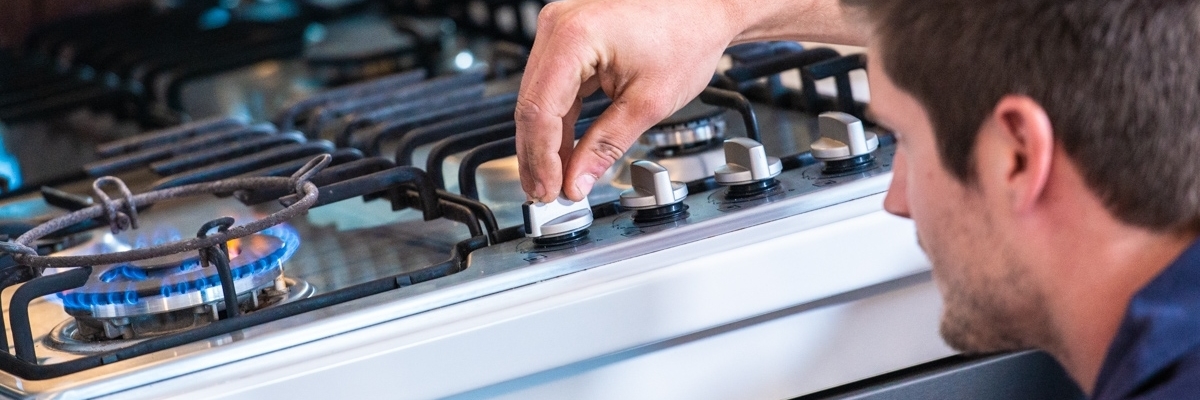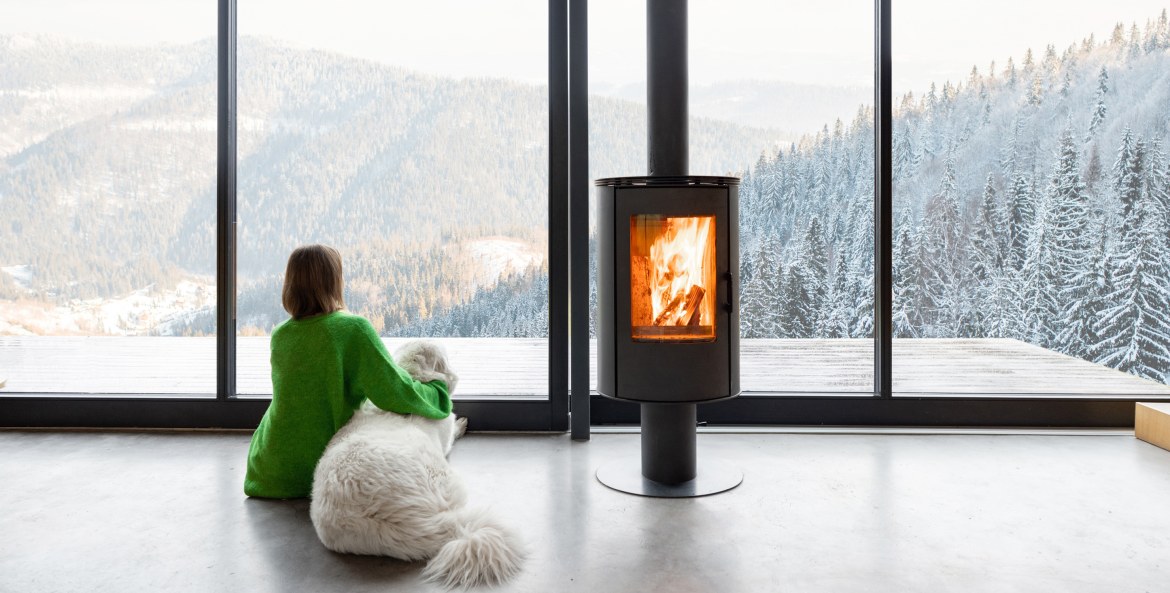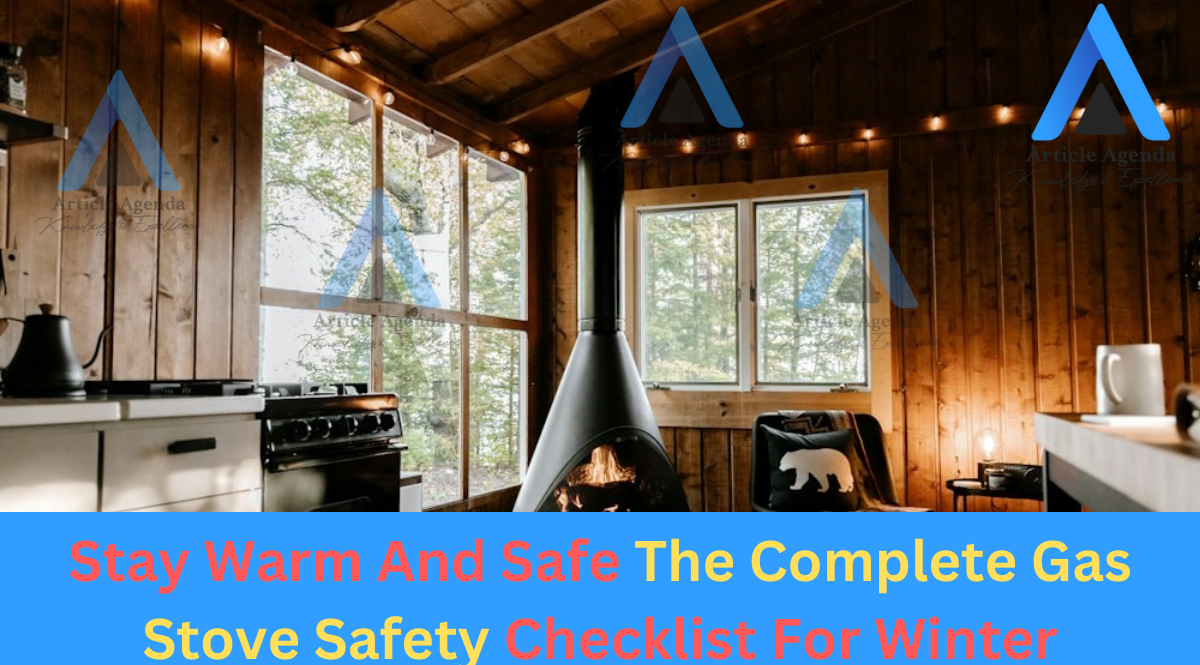Why gas stove safety is important
As the winter season approaches, many of us turn to our gas stoves to provide warmth and comfort. However, it is crucial to prioritize safety when using a gas stove to prevent any potential hazards. Gas stove safety should always be a top concern to ensure the well-being of yourself and your loved ones.
Gas stoves operate using flammable gas, making them prone to certain risks. One of the primary dangers associated with gas stoves is the possibility of gas leaks. Gas leaks can lead to fires or explosions, causing severe damage to your property and endangering lives. Additionally, improper ventilation can result in the accumulation of carbon monoxide, a colorless and odorless gas that can be lethal if inhaled in high concentrations.
Table of Contents
- Why gas stove safety is important
- Common gas stove safety hazards
- The importance of proper ventilation
- Gas stove maintenance checklist
- How to check for gas leaks
- Safe practices when using a gas stove
- Carbon monoxide safety precautions
- Emergency procedures in case of a gas leak or fire
- Gas stove safety devices and accessories
- Conclusion
Common gas stove safety hazards
Gas stove safety hazards can arise from various sources, and it is essential to be aware of them to prevent accidents. One of the most common hazards is an unattended stove. Leaving a gas stove unattended can lead to accidental fires, especially if flammable materials are nearby. It is crucial to always keep an eye on your stove while it is in use.
Another hazard is using the stove for purposes other than cooking. Some individuals may try to use the stove to warm their homes or dry clothes, which can be extremely dangerous. Gas stoves are designed for cooking purposes only, and any other use can lead to fires or other accidents.
Additionally, placing flammable items on the stove, such as kitchen towels or curtains, increases the risk of fire. It is crucial to keep flammable materials away from the stove to prevent accidental ignition and potential disasters.

The importance of proper ventilation
Proper ventilation is a vital aspect of gas stove safety. When using a gas stove, it is crucial to ensure that the area is well-ventilated to prevent the accumulation of harmful gases. Gas stoves produce carbon monoxide, a gas that can be poisonous when inhaled in large amounts.
To maintain proper ventilation, make sure that the kitchen is equipped with an exhaust fan or range hood. These devices help to remove the smoke, steam, and gases produced during cooking, including carbon monoxide. If your kitchen does not have an exhaust fan, consider opening windows or using portable fans to improve air circulation.
It is also important to regularly clean any vents or filters associated with your gas stove. Blocked or dirty vents can impede proper ventilation, increasing the risk of carbon monoxide buildup. Regular cleaning and maintenance will ensure that your gas stove operates safely and efficiently.
Gas stove maintenance checklist
Regular maintenance of your gas stove is crucial to ensure its safe and efficient operation. Follow this simple checklist to keep your gas stove in top condition:
1. Clean the burners: Remove the burner grates and caps and clean them thoroughly. Use warm soapy water and a scrub brush to remove any grease or food residue. Dry the burners completely before reassembling them.
2. Check the gas supply line: Inspect the gas supply line for any signs of wear or damage. Look for cracks, leaks, or loose connections. If you notice any issues, contact a professional to repair or replace the gas supply line.
3. Test the igniters: Turn off the gas supply and unplug the stove. Remove the burner caps and turn on each burner knob to test the igniters. If any igniter fails to spark or produces a weak spark, it may need to be replaced.
4. Inspect the oven and broiler: Check the oven and broiler for any signs of damage, such as broken or malfunctioning heating elements. If you detect any issues, consult a professional to repair or replace the faulty components.
5. Clean the oven and stovetop: Regularly clean the oven and stovetop to remove grease, spills, and food particles. Use mild soapy water and a non-abrasive sponge to avoid scratching the surfaces. Rinse thoroughly and dry with a clean cloth.
By following this maintenance checklist, you can ensure that your gas stove remains in excellent condition and operates safely.
Read More : 5 Diseases whose Infection Can Kill You
How to check for gas leaks
Gas leaks pose a significant safety risk and should be promptly addressed. Here’s how you can check for gas leaks:
1. Turn off all gas appliances: Make sure all gas appliances, including your stove, are turned off.
2. Check the gas meter: Locate your gas meter and check the dial. If the dial is spinning, it indicates a gas leak. In such cases, evacuate your home immediately and contact your gas provider for assistance.
3. Perform a soap and water test: Mix equal parts of liquid dish soap and water in a spray bottle. Spray the solution onto the gas supply line connections, including the shut-off valve and any visible pipes. If you see bubbles forming, it indicates a gas leak. In this situation, turn off the gas supply, open windows for ventilation, and contact a professional to fix the issue.
4. Use a gas leak detector: Gas leak detectors are devices specifically designed to detect the presence of gas leaks. You can purchase a gas leak detector from a hardware store and follow the manufacturer’s instructions to check for leaks.
Safe practices when using a gas stove
To ensure gas stove safety, it is essential to follow some safe practices while using your stove:
1. Never leave the stove unattended: Always supervise the stove while it is in use. If you need to leave the kitchen, turn off the burners.
2. Keep flammable items away: Avoid placing flammable items near the stove, such as kitchen towels, curtains, or paper products. Keep a safe distance to prevent accidental ignition.
3. Use appropriate cookware: Choose cookware with flat bottoms and securely fitting lids. This helps to distribute heat evenly and prevents spills or splatters that could cause fires.
4. Turn off the gas supply: When you are done cooking, turn off the gas supply to the stove. This prevents the possibility of gas leaks or accidental fires.
Adhering to these safe practices will go a long way in preventing accidents and ensuring the safe use of your gas stove.

Carbon monoxide safety precautions
Carbon monoxide (CO) is a silent killer, as it is odorless and colorless. It is crucial to take the following precautions to protect yourself and your family from carbon monoxide poisoning:
1. Install carbon monoxide detectors: Place carbon monoxide detectors in or near your kitchen and sleeping areas. These detectors will alert you if carbon monoxide levels become dangerously high.
2. Keep the kitchen well-ventilated: Use exhaust fans or range hoods to remove any smoke or gases produced by the gas stove. Proper ventilation helps to prevent the buildup of carbon monoxide.
3. Schedule regular inspections: Have your gas stove and other gas appliances inspected annually by a qualified professional. They can check for any potential leaks or issues that may lead to the production of carbon monoxide.
Read More : TikTok Marketing You Need To Know
Emergency procedures in case of a gas leak or fire
In the event of a gas leak or fire, it is crucial to know how to respond quickly and effectively. Follow these emergency procedures:
1. Gas leak: If you suspect a gas leak, evacuate your home immediately. Do not turn on or off any electrical switches or appliances, as they may cause sparks. Once you are in a safe location, contact your gas provider and wait for professional assistance.
2. Fire: In the event of a fire, first ensure your safety and the safety of others. If the fire is small and manageable, use a fire extinguisher to put it out. If the fire is spreading rapidly or uncontrollably, evacuate your home, and call the emergency services.
Remember, your safety should always be the top priority in emergencies. Be prepared and know how to react to protect yourself and others.
Gas stove safety devices and accessories
Several safety devices and accessories can enhance gas stove safety. Consider the following options:
1. Flame failure devices (FFD): FFDs automatically shut off the gas supply if the flame goes out. These devices prevent gas leaks and the accumulation of unburned gas.
2. Gas leak detectors: Gas leak detectors can provide an additional layer of safety by alerting you to the presence of gas leaks. These devices are especially useful if you are not at home and want to monitor your gas stove remotely.
3. Fire extinguishers: Keep a fire extinguisher in your kitchen and make sure it is easily accessible. Familiarize yourself with its proper use and ensure it is in good working condition.
Investing in these safety devices and accessories can provide peace of mind and an extra layer of protection for your gas stove.
Conclusion
Gas stove safety should never be taken lightly, especially during the winter season when gas stoves are used more frequently. By understanding the potential hazards associated with gas stoves and implementing proper safety measures, you can ensure a warm and safe environment for yourself and your loved ones.
From maintaining proper ventilation to conducting regular maintenance checks and being aware of emergency procedures, every step you take towards gas stove safety is a step towards protecting your home and family. Prioritize safety at all times, adhere to safe practices, and consider investing in gas stove safety devices and accessories for added peace of mind.
Latest Post :
-
Smart Home Appliances in the UAE: Revolutionizing Modern Living
The UAE has long been recognized as a hub for innovation and technological advancement, and the adoption of smart home appliances is no exception. As the nation embraces the concept of smart homes, residents are experiencing a transformation in their daily lives, characterized by increased convenience, efficiency, and sustainability. This article explores how smart home…
-
(Artificial Intelligence) AI and ML (Machine Learning) : Transforming the Future
Artificial Intelligence (AI) and Machine Learning (ML) are two of the most transformative technologies of our time. They are reshaping industries, driving innovation, and opening up new possibilities in ways previously unimaginable. This article explores the fundamentals of AI and ML, their applications, and their profound impact on various sectors. Understanding Artificial Intelligence (AI) What…
-
Digital Marketing Services: Transforming Your Business in the Digital Age
In today’s digital-first world, businesses must leverage digital marketing services to remain competitive, attract customers, and drive growth. Digital marketing encompasses a broad range of tactics and strategies aimed at promoting products or services through digital channels. This article delves into the various types of digital marketing services available, their benefits, and how businesses can…






Hello! I could have sworn I’ve been to this blog before but after browsing through some of the post I realized it’s new to me. Anyways, I’m definitely happy I found it and I’ll be book-marking and checking back frequently!
I like what you guys tend to be up too. This type of clever work and coverage! Keep up the wonderful works guys I’ve incorporated you guys to our blogroll.
I like this web site so much, saved to favorites.
Absolutely pent articles, Really enjoyed reading through.
Thank you for sharing excellent informations. Your site is very cool. I am impressed by the details that you¦ve on this website. It reveals how nicely you understand this subject. Bookmarked this web page, will come back for more articles. You, my pal, ROCK! I found just the info I already searched all over the place and just could not come across. What an ideal site.
Hi there would you mind letting me know which hosting company you’re utilizing? I’ve loaded your blog in 3 completely different browsers and I must say this blog loads a lot quicker then most. Can you recommend a good hosting provider at a honest price? Kudos, I appreciate it!
WONDERFUL Post.thanks for share..more wait .. …
Wow! Thank you! I continuously wanted to write on my blog something like that. Can I take a fragment of your post to my blog?
I?¦ll immediately seize your rss as I can’t in finding your e-mail subscription hyperlink or newsletter service. Do you’ve any? Please allow me know so that I may just subscribe. Thanks.
I’m impressed, I have to say. Actually rarely do I encounter a weblog that’s each educative and entertaining, and let me inform you, you’ve got hit the nail on the head. Your concept is excellent; the difficulty is one thing that not sufficient individuals are speaking intelligently about. I am very glad that I stumbled throughout this in my search for something referring to this.
My brother suggested I would possibly like this web site. He was totally right. This post truly made my day. You cann’t imagine just how a lot time I had spent for this information! Thanks!
Good day! I could have sworn I’ve been to this site before but after browsing through some of the post I realized it’s new to me. Nonetheless, I’m definitely happy I found it and I’ll be bookmarking and checking back often!
I?¦ve recently started a blog, the information you provide on this web site has helped me greatly. Thank you for all of your time & work.
I do love the manner in which you have presented this particular concern plus it does indeed provide me some fodder for consideration. Nevertheless, coming from everything that I have witnessed, I just wish as the responses pack on that folks continue to be on point and don’t start on a tirade of some other news du jour. Anyway, thank you for this superb piece and though I can not necessarily concur with this in totality, I value the viewpoint.
I adore forgathering useful info, this post has got me even more info! .
What does the Lottery Defeater Software offer? The Lottery Defeater Software is a unique predictive tool crafted to empower individuals seeking to boost their chances of winning the lottery.
I am glad to be a visitant of this arrant site! , appreciate it for this rare info ! .
Hello. magnificent job. I did not anticipate this. This is a splendid story. Thanks!
Hi this is kinda of off topic but I was wondering if blogs use WYSIWYG editors or if you have to manually code with HTML. I’m starting a blog soon but have no coding knowledge so I wanted to get guidance from someone with experience. Any help would be greatly appreciated!
Outstanding post, I believe blog owners should learn a lot from this web site its very user pleasant.
Have you ever thought about adding a little bit more than just your articles? I mean, what you say is valuable and all. However think about if you added some great graphics or video clips to give your posts more, “pop”! Your content is excellent but with images and clips, this blog could definitely be one of the most beneficial in its niche. Terrific blog!
Hello. magnificent job. I did not expect this. This is a splendid story. Thanks!
I visited a lot of website but I believe this one has got something extra in it in it